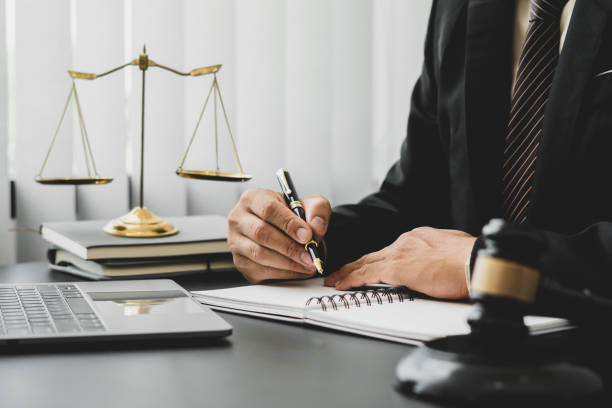
In general, there are two kinds of precedents in law:
The binding precedent is the precedent that a court has to abide by when deciding an issue.
Persuasive precedent: A precedent that courts can, however, but are not obliged to, use in deciding the case.
Legal precedents play a crucial part in the decision-making process and assist judicial officers with referencing similar cases and, in the end, reducing time spent reviewing the results. Of course, it’s typically a research paralegal or associate charged with studying case law and research into legal issues. The case-building process requires a lot of investigation, in which paralegals and associates search through legal databases and case law statutes in digital and physical formats. Analyzing large databases can be tedious, but this task can be made easier by using the most effective tools for research into case law.
Legal precedent
In Kudlacik in Kudlacik Johnnys Shawnee Inc, it was noted that once a court sets the legal basis according to the law of stare decisis will usually be confirmed by the same court whenever the same legal issue comes to the fore in subsequent instances, and also in any lower rank court.
So what happened? What happened? Supreme Court upheld a district court’s decision to dismiss the plaintiff’s suit in favor of the defendants (two commercial establishments for drinking) to recover injuries sustained in a collision with a vehicle that was driven by a driver who had consumed alcoholic drinks at the establishments of defendants before the incident.
In the appeals process, the plaintiff requested the Supreme Court to re-examine the district court’s ruling that shields commercial alcohol establishments from liability for the crimes committed by drunken customers. It was the Supreme Court upheld the district court’s decision after reaffirming the common law according to the stare decisis principle ruling:
This court does not overturn Ling v. Jan’s Liquors 703 P.2d 731 (Kan. 1985), and the plaintiff was unable to make an action for negligence as well as
Plaintiff could not claim to aid and abide under the Restrictions (Second) of Torts.
“Legal researchers have one perennial question: Have I done enough?”
Ensure the legal researcher is at ease that they’ve accomplished enough. Check out the entire white paper.
How do you utilize the law of the case as a precedent in the report
Legal reports are usually prepared in two ways: either in an uncomplicated, neutral style or in a more convincing manner.
Include the essential elements of a short
Although the styles of writing and templates for documents differ, reports must include the following:
A short description of the problem will be discussed in greater detail with an easy resolution.
A statement of factual information that is in the present
Analytically drew a comparison between the facts and the question of the law;
An end to the controversy with its attributes and its analysis of law.
Assist in arithmetic and legal questions.
Legal precedents occur when the circumstances of a particular case and legal requirements are similar to those of a legal dispute. If a party can show that it was improperly resolved or the outcome was different, the precedent is usually used to determine any effect in a subsequent similar case.
For judges, it is crucial to recognize how the “ratio decidendi,” or the reasons behind the decision taken in the previous cases, follow the precedents laid out in reports. When the reasoning is comparable enough to yield the exact or similar result, it’s the reasoning, not anything else, that “links” subsequent cases.
Additional citations and notes
In reviewing law reports to find legal precedents, paralegals, lawyers, and students need to comprehend the importance of analyzing and navigating the law report promptly. The judgment is just the first part of a law report. It begins by naming the defendants, their names, the date of hearing and the judge or the judge’s name, and, most often, the name of the court. The headnote provides a synopsis of the relevant facts and the judge’s ruling, followed by catchy phrases and indexing phrases. While writing the report, it’s essential to identify the precedents used when determining the decision and the authority on which the decision was based.
Here are some of the things to remember in citing case law when making a solid report:
Write in simple and normal legal language
Use shorter sentences.
Make use of the smallest amount of jargon
Follow the IRAC Method (Issue, Reasoning, Analysis, and Conclusion)
Create sub-topics for better comprehension
Keep the flow of the report.
Final thoughts on the precedents
It is often difficult to define what “the law” is in the context of a particular legal issue. To determine the law that applies to your situation, it is possible to analyze several cases with the specific facts of your particular case.
Are you aware of the rules and laws applicable to your situation? Have you found cases or instances from the past with similar legal and factual questions similar to yours? Locating a point close enough or similar enough can take much time and time-consuming research. If this is the case for yourself today, sign up for an initial trial for Westlaw Precision to drastically streamline your analysis into case law or explore Practical Law to gain access to thousands of written by experts instructions forms, templates, checklists, and more in all the major areas of practice today.
The information on this site is not intended to be, nor should it be, taken as legal advice. This information can be considered general and needs to reflect the most recent developments in the law. Thomson Reuters is not a law firm; an attorney-client relationship does not arise from using this site. You should seek competent legal counsel before acting upon any information on this site.



